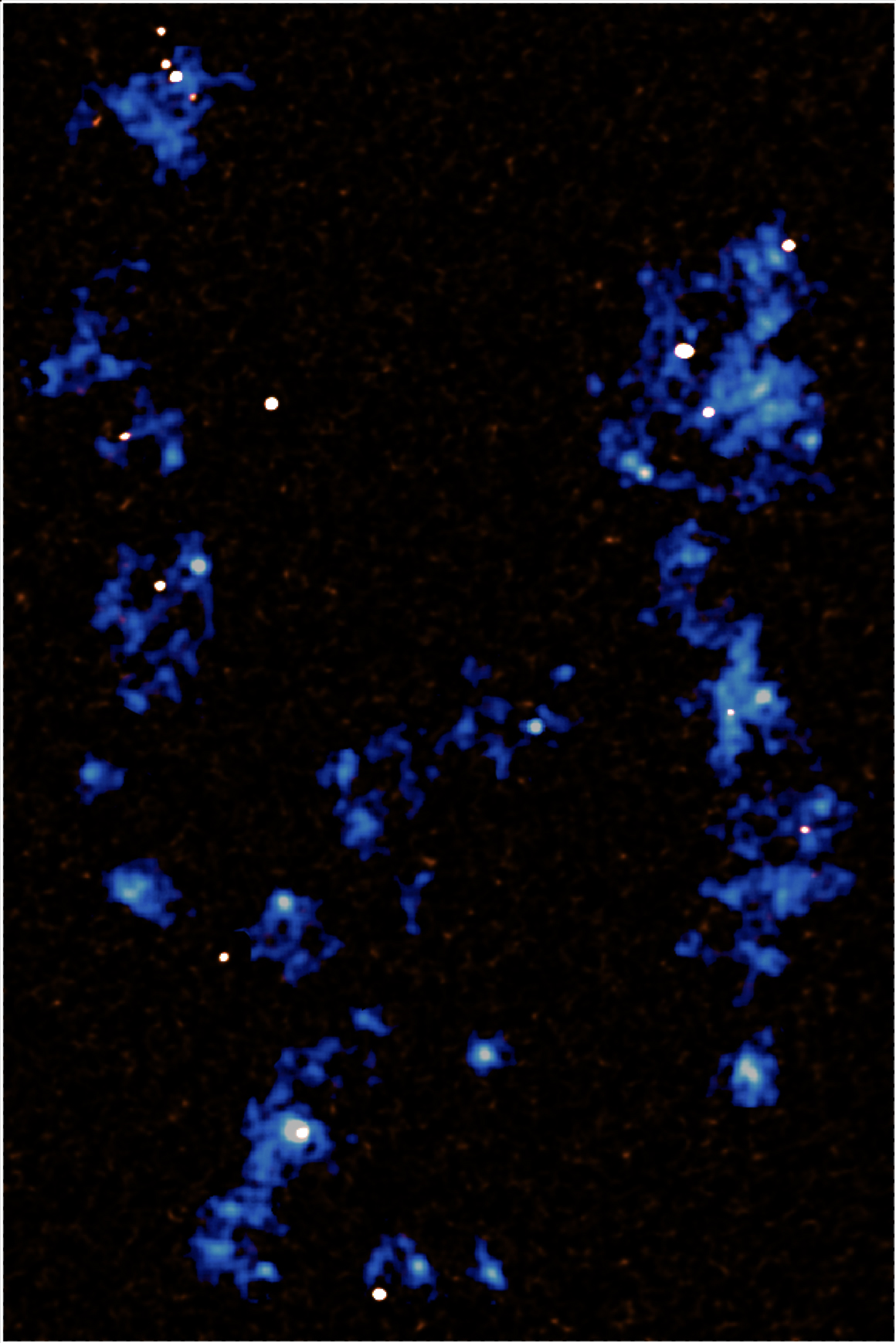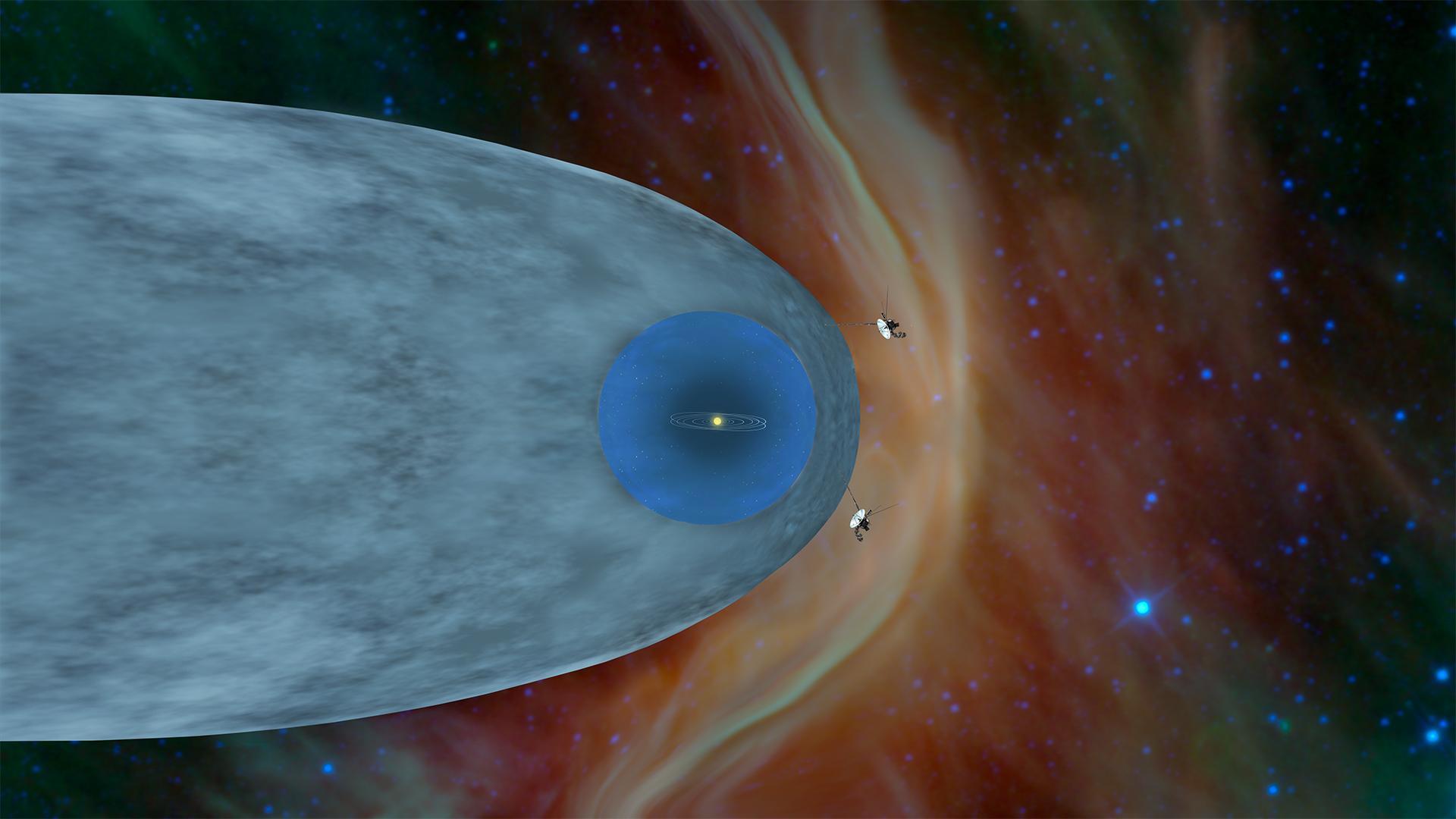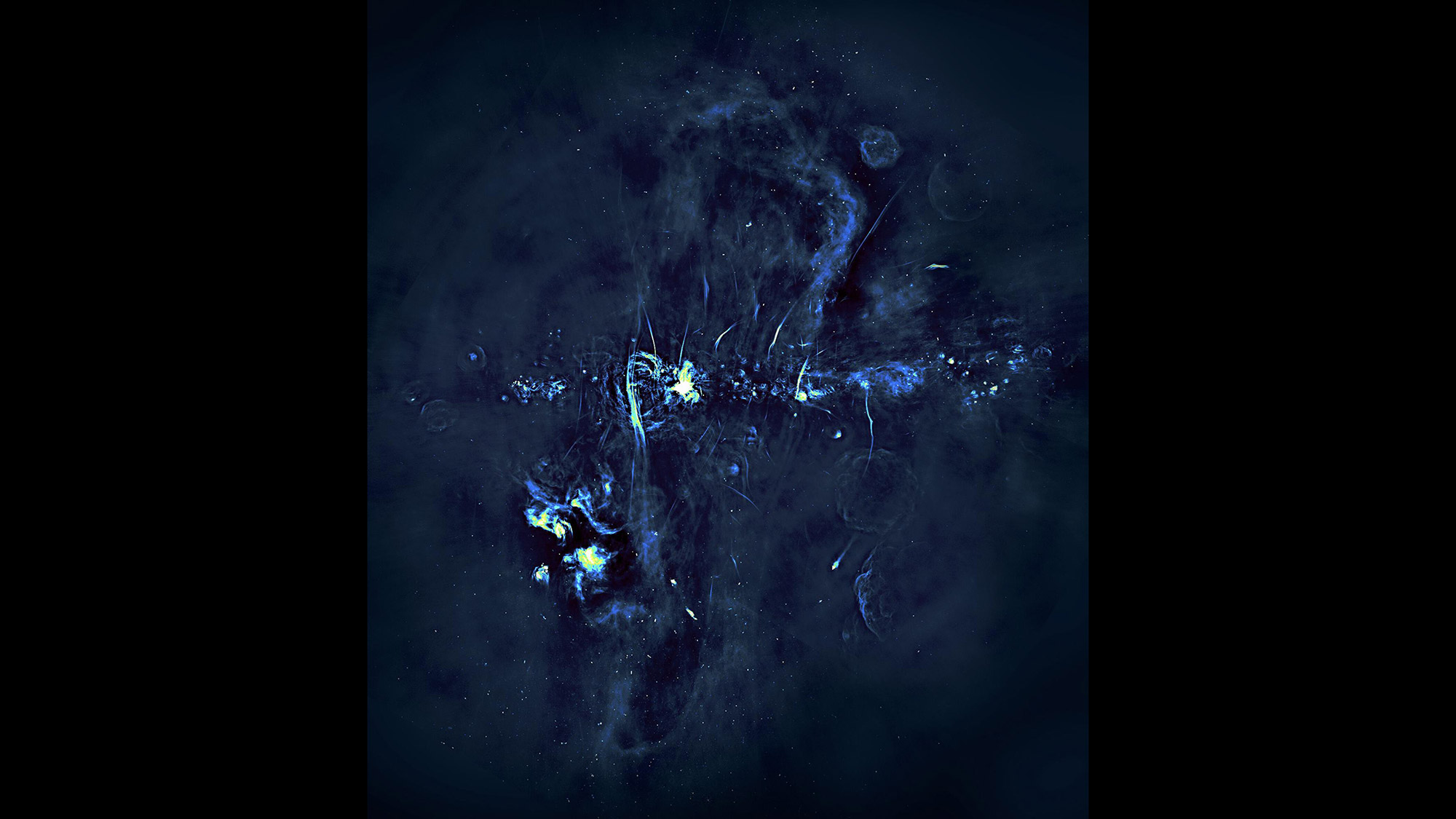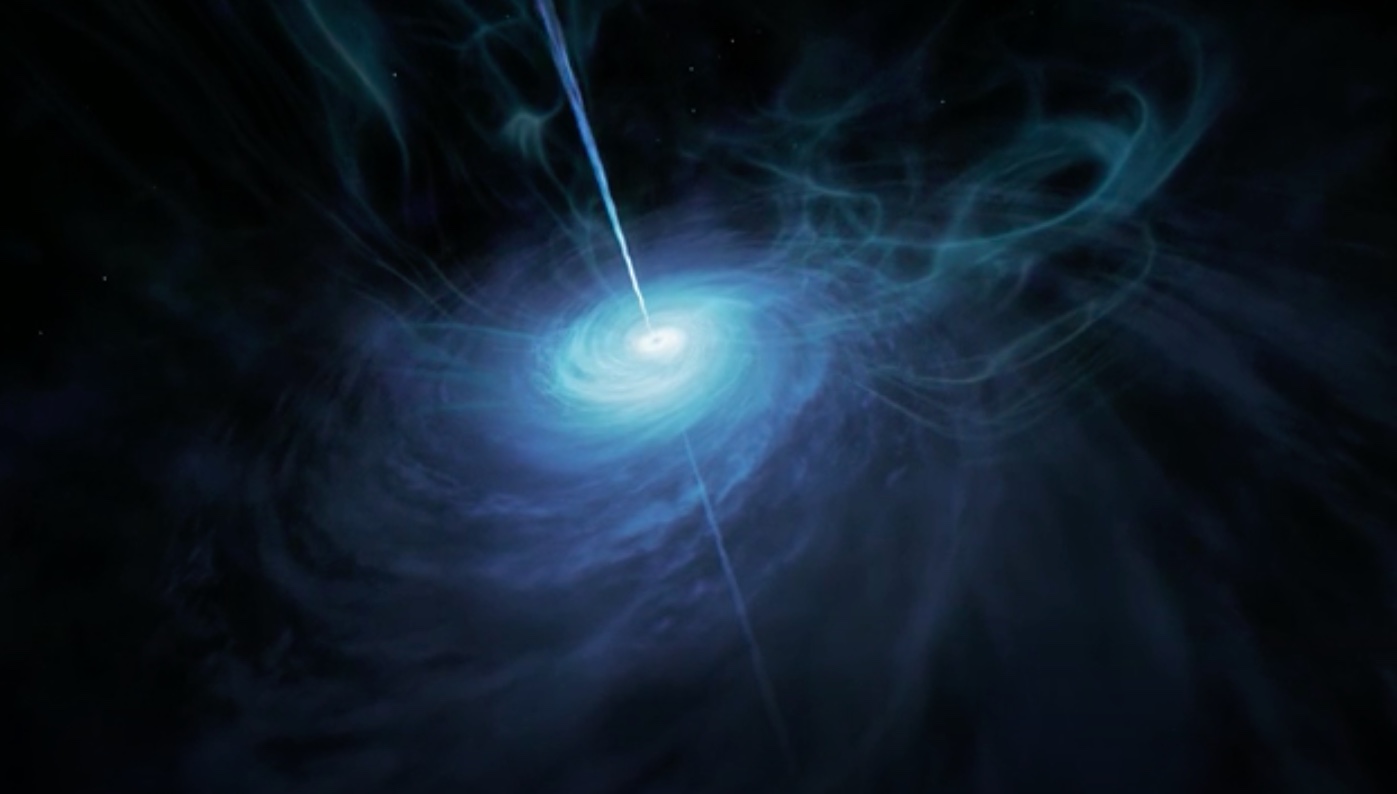9 Epic Space Discoveries You Probably Missed in 2019
Scientists probed some strange corners of the universe this year. Here are our favorites.
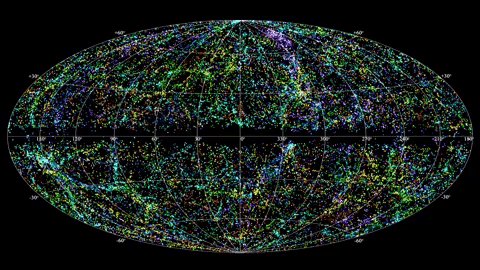
Space dominated the headlines in 2019 with stories documenting the first successful image of a black hole, or how a crashed Israeli spacecraft spilled thousands of tardigrades onto the moon.
But the universe is a pretty big place (pardon the understatement), and countless mind-bending phenomena happen there every day, whether or not they make it onto the nightly news. To give credit to the universe where it's due, here are nine epic space discoveries you may have missed this year.
The cosmic web revealed
Every galaxy in the universe is a pit stop on a long highway of gas known as the cosmic web. Each road, or "filament," on this intergalactic interstate is made of hydrogen left over from the Big Bang; where large quantities of hydrogen converge, clusters of galaxies appear in the dark sea of space. The web is too faint to see with the naked eye, but in October, astronomers photographed a piece of it for the first time ever. Using the faint ultraviolet glow of a distant galaxy as backlighting, the image shows blue strands of hydrogen crisscrossing through space 12 billion light-years away, connecting bright white galaxies in its path.
This incredible image will help astronomers understand how the first galaxies in the universe formed — and it's also just a groovy reminder that everything really is, like, totally connected, man.
The plasma shield that guards the realms of men
There is a violent clash unfolding at the frontier of our solar system. Billions of miles from the solar system's center, crackling solar wind collides with powerful cosmic rays at a boundary called the heliopause. When NASA's twin Voyager probes passed through the region and entered interstellar space last year, astronomers saw that the heliopause is not just a symbolic boundary; it's also a physical wall of soupy plasma that deflects and dilutes the worst of the incoming radiation. This plasma "shield," as it's described in a Nov. 4 study, may deflect about 70% of cosmic rays from entering our solar system. You could call it the shield that guards the realms of men. (You won't find White Walkers on the other side, but you will find some white dwarfs.)
Radio bubbles in the galaxy's gut
The Fermi Bubbles are twin blobs of high-energy gas ballooning out of both poles of the Milky Way's center, stretching into space for 25,000 light-years apiece (roughly the same as the distance between Earth and the center of the Milky Way). The bubbles are thought to be a few million years old and likely have something to do with a giant explosion from our galaxy's central black hole — but observations are scarce, as they are typically only visible to ultrapowerful gamma-ray and X-ray telescopes. This September, however, astronomers detected the bubbles in radio waves for the first time, revealing large quantities of energetic gas moving through the bubbles, possibly fueling them to grow even larger, according to the scientists' report in the journal Nature.
Fermi's chimneys
At the center of our galaxy is a supermassive black hole. This object's monstrously powerful gravity is sort of like the glue that holds the Milky Way together. Earlier this year, researchers discovered that the glue is letting off fumes. In a March 20 study, astronomers looked at the X-rays seeping out of the galaxy's center and discovered two "chimneys" of superhot plasma stretching for hundreds of light-years in either direction. The giant smokestacks seem to be connecting the central black hole to the bottom of the Fermi Bubbles. It's possible that these chimneys are fueling the bubbles' slow but steady growth.
Get the world’s most fascinating discoveries delivered straight to your inbox.
Planet in a dead star's thrall
When a typical sun runs out of fuel and collapses, it may become a white dwarf — the compact, crystalline corpse of a star. If that star had any planets orbiting around it, chances are they were either obliterated in the star's final growth spurt (Earth will likely be engulfed by our sun in its final years) or sucked up and destroyed by the white dwarf's intense gravity. However, in early December, astronomers discovered an intact planet orbiting a white dwarf star for the first time ever. Spotted about 2,040 light-years from Earth, the white dwarf system seems to be emitting a strange combo of gases that could be a Neptune-like planet slowly evaporating as it circles the dead sun once every 10 days. The study adds major evidence to the theory that dead stars can host planets (at least temporarily).
Solar tsunamis
The Parker Solar Probe's record-setting approach to the sun made this year's biggest solar science headlines, but arguably the most epic sun study came months earlier, in February, according to scientists writing in the journal Scientific Reports. The researchers described a solar phenomenon called "terminator events" — basically, cataclysmic magnetic-field collisions at the sun's equator. More epic still, the authors wrote, these collisions may result in twin tsunamis of plasma tearing across the star's surface at 1,000 feet (300 meters) per second in both directions. These gargantuan (though still theoretical) solar tsunamis could last for weeks at a time and may occur every decade or so. The next one could be due in early 2020, the authors wrote, which would give the Parker probe something truly gnarly to behold.
Black hole babies from the early universe
In March, Japanese astronomers searched for baby pictures of the universe by turning their telescope to a corner of space 13 billion light-years away. There, they spied 83 previously undiscovered supermassive black holes dating to the early days of the universe. The holes — actually a bunch of quasars, or huge, luminous disks of gases and dust that surround supermassive black holes — were around as few as 800 million years after the Big Bang, making them some of the earliest objects ever detected. The composite image of all 83 quasars (above) may not be as cute as your own baby pictures, but it's arguably way cooler.
Renegade star flees rare black hole
In September, astronomers detected one of the fastest renegade stars ever recorded, fleeing across the Milky Way at 1.2 million mph (2 million km/h). Most stars moving at such blazing speeds are usually the survivors of a binary system that got ripped in half by a supermassive black hole or exploding supernova, but this speedy sun appeared to be different.
After tracking the star's velocity and trajectory, researchers determined that it seemed to have suffered a run-in with a mid-mass black hole — that is, a black hole with hundreds to hundreds of thousands of times the mass of the sun (as opposed to a supermassive black hole, which can be millions or billions of times the sun's mass). This theoretical type of black hole has never been observed before, and scientists have never found convincing evidence that they actually exist. Now, one speedy star might shine the way to the proof that scientists have been looking for.
Fast radio burst followed home
Fast radio bursts (FRBs) are intensely bright, vanishingly brief pulses of radio energy that constantly zip across the universe like invisible bullets. What are they, exactly — belches of radiation from supermassive black holes? The pulses of alien spaceship engines? Scientists don't know for sure, but a team of researchers came closer to solving the puzzle in June when they tracked an FRB across space and time to its precise origins for the first time ever. Using a radio telescope array in the Australian outback, the researchers found the burst in question (which lasted a fraction of a millisecond) originated from a Milky Way-size galaxy about 3.6 billion light-years from Earth, which was no longer producing fresh stars. These results show that FRBs can form in a variety of cosmic environments (and that aliens still can't be ruled out).
- The 12 Strangest Objects in the Universe
- 15 Unforgettable Images of Stars
- 9 Strange Excuses for Why We Haven't Met Aliens Yet
Originally published on Live Science.

Brandon is the space / physics editor at Live Science. With more than 20 years of editorial experience, his writing has appeared in The Washington Post, Reader's Digest, CBS.com, the Richard Dawkins Foundation website and other outlets. He holds a bachelor's degree in creative writing from the University of Arizona, with minors in journalism and media arts. His interests include black holes, asteroids and comets, and the search for extraterrestrial life.


